- Administrator
- Albums and Singles
 Mitchell Akiyama and Tony Boggs create wildly illustrative music bydestroying vocal and instrumental music that they record. Whatseperates this studio-foolery from other projects aimed at makingbeauty out of destroyed sounds is the way the chaos is controlled andshaped perfectly. D?ormais compose songs, plan their moves ahead oftime, and give their dying sounds life by stacking them together and ontop of each other in meaningful ways. It doesn't hurt that all thedrum, piano, string, and vocal parts were recorded by the group andthen disassembled and rearranged by the same people. Regardless of theprocess, the music is absolutely gorgeous. Bits and pieces of slideguitar, piano, and acoustic strumming cascade and flow as one stream ofmusic with each instrument sliding above and submerging beneath thesurface. Violins rattle, pop, hum, and echo throughout the backgroundcreating the illusion that this music must have been created in acathedral dedicated to dead and dying instruments and compositions longabandoned by their composers. The mass of sound is glowingly beautifuland never seems to repeat or ever hints at any patterns that it may bebased on. The creation of the music must've been a long and painfulprocess as no two songs sound alike and each features a variety ofinstrumentation used in various manners. "To Sing Before Going toSleep" is particularly good example of what can be done with awell-written song and an ear for space, silence, and timbres. It driftsso elegantly with mysterious female vocals nearly crying out from theslow flow of crystalline guitar picking and howling, unidentifiableinstruments. Each song sounds as if every second were random, but theresult is so perfect that I think it must've been planned that way. Iambroken...is a blueprint for what can be done with glitchy sounds and a bitcompositional patience. Of course defective sounds can be gorgeous, butthey're magnificent when composed and arranged in a way that feelsfamiliar. In all reality, however, it's truly alien.
Mitchell Akiyama and Tony Boggs create wildly illustrative music bydestroying vocal and instrumental music that they record. Whatseperates this studio-foolery from other projects aimed at makingbeauty out of destroyed sounds is the way the chaos is controlled andshaped perfectly. D?ormais compose songs, plan their moves ahead oftime, and give their dying sounds life by stacking them together and ontop of each other in meaningful ways. It doesn't hurt that all thedrum, piano, string, and vocal parts were recorded by the group andthen disassembled and rearranged by the same people. Regardless of theprocess, the music is absolutely gorgeous. Bits and pieces of slideguitar, piano, and acoustic strumming cascade and flow as one stream ofmusic with each instrument sliding above and submerging beneath thesurface. Violins rattle, pop, hum, and echo throughout the backgroundcreating the illusion that this music must have been created in acathedral dedicated to dead and dying instruments and compositions longabandoned by their composers. The mass of sound is glowingly beautifuland never seems to repeat or ever hints at any patterns that it may bebased on. The creation of the music must've been a long and painfulprocess as no two songs sound alike and each features a variety ofinstrumentation used in various manners. "To Sing Before Going toSleep" is particularly good example of what can be done with awell-written song and an ear for space, silence, and timbres. It driftsso elegantly with mysterious female vocals nearly crying out from theslow flow of crystalline guitar picking and howling, unidentifiableinstruments. Each song sounds as if every second were random, but theresult is so perfect that I think it must've been planned that way. Iambroken...is a blueprint for what can be done with glitchy sounds and a bitcompositional patience. Of course defective sounds can be gorgeous, butthey're magnificent when composed and arranged in a way that feelsfamiliar. In all reality, however, it's truly alien.Read More
- Administrator
- Albums and Singles
 "File under Electronic" says the promotional blurb. It seems thatSchematic are trying to sell this reissue of Velez 1985 release to theAutechre brigade. I can see the parallels but is trance-drumming whatthe electronica heads are after? Velez, a superb drummer and authorityon frame drums, their various traditional techniques and musicalstyles, draws on those references in five longish improvised piecesthat are ultimately not traditional music but his own. As with theelectronica, rhythmic framework is always apparent and layers ofcomplexity are added. But here every individual touch is a unique humangesture in real time as (opposed to programming and looping) and theresult is all the more exciting for it. Velez' control is amazing.While the tonic rhythms are never lost, their internal complexity isbuilt up and pushed to breaking point only to suddenly return home—theapparent instability was all an illusion with Velez in perfect controlthroughout. Since the rhythmic modes are quite clear it sounds morelike process music than improv and has the hypnotic character of goodminimalism. That and the overtone drone singing at a couple of pointsgives a hint of New-Ageism and World Music. In a certain sense, there'slittle difference between this and hippy drum circles. But practicallythe difference is enormous: Velez can really play, he devoted his lifeto mastery of these instruments, achieved that and it shows. Theexcitement of bravura virtuoso performance is the distinction. Velezcan create the illusion of as many as three drummers playing at once.This isn't to say that Velez is a flashy show-off—not at all, the musicis fairly muted with an aim at detail and nuance. The low dynamicsactually allow one to better hear the nature of the sound of thevarious drums he uses. At a surface level it may seem static butunderneath there enormous depth to the variation of both rhythm andsound. It can be quite the head-trip if you give it the opportunity,which I suppose is what Schematic hope all you Autechre fans will do.
"File under Electronic" says the promotional blurb. It seems thatSchematic are trying to sell this reissue of Velez 1985 release to theAutechre brigade. I can see the parallels but is trance-drumming whatthe electronica heads are after? Velez, a superb drummer and authorityon frame drums, their various traditional techniques and musicalstyles, draws on those references in five longish improvised piecesthat are ultimately not traditional music but his own. As with theelectronica, rhythmic framework is always apparent and layers ofcomplexity are added. But here every individual touch is a unique humangesture in real time as (opposed to programming and looping) and theresult is all the more exciting for it. Velez' control is amazing.While the tonic rhythms are never lost, their internal complexity isbuilt up and pushed to breaking point only to suddenly return home—theapparent instability was all an illusion with Velez in perfect controlthroughout. Since the rhythmic modes are quite clear it sounds morelike process music than improv and has the hypnotic character of goodminimalism. That and the overtone drone singing at a couple of pointsgives a hint of New-Ageism and World Music. In a certain sense, there'slittle difference between this and hippy drum circles. But practicallythe difference is enormous: Velez can really play, he devoted his lifeto mastery of these instruments, achieved that and it shows. Theexcitement of bravura virtuoso performance is the distinction. Velezcan create the illusion of as many as three drummers playing at once.This isn't to say that Velez is a flashy show-off—not at all, the musicis fairly muted with an aim at detail and nuance. The low dynamicsactually allow one to better hear the nature of the sound of thevarious drums he uses. At a surface level it may seem static butunderneath there enormous depth to the variation of both rhythm andsound. It can be quite the head-trip if you give it the opportunity,which I suppose is what Schematic hope all you Autechre fans will do. Read More
- Administrator
- Albums and Singles
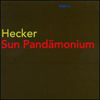 Typically I enjoy listening to scratches, hums, explosions, defectivemotors, swarms of bees, and intergalactic noise galore, but somehow Iam incredibly unimpressed with these exercises in manipulation. Itdoesn't even start off on the right foot: "Bsf”zyk 5" is the longestfour minutes and sixteen seconds I think I have ever sat through.Strings somehow caught on the event horizon of a blackhole pulse anddistort themselves while constantly being destroyed and repitched. It'sas if they are constantly gaining velocity only to lose it in whatsounds like a hyperspace effect from some sci-fi film. "Stocha AcidSlook" takes up just over twenty-one minutes of this forty minuterecording. It begins so promisingly with a low rumble sounding like theperpetual chant of a monk stuck on a solitary note. It slowly developsinto a more abrasive track filled with high pitched waverings of birdsmutated by a nuclear meltdown. It might read as if it is entertaining(and the first few minutes are), but after awhile it becomes moreannoying than people chattering over the music at a concert. After theonslaught of sound, the remaining tracks feel like little leftovers orhalf thought-out soundscapes that go nowhere and do nothing for thealbum as a whole. Perhaps an entire release dedicated to these littleshorts would make for an entertaining listen. It's their placement nextto this one, mammoth piece that makes them feel insignificant. Afterawhile everything begins to sound the same and all the effects becomeso foreign as to be completely alien. There are some fascinatingmoments here and there, but it ultimately distances itself too far fromme. There's no way for me to relate to it as it has almost no emotivequalities: eventually glithced out noise like this will have to findsome familiar ground to touch upon to survive. The effect of becomingso abstract is not always fascination, sometimes it just leads to plainold frustration.
Typically I enjoy listening to scratches, hums, explosions, defectivemotors, swarms of bees, and intergalactic noise galore, but somehow Iam incredibly unimpressed with these exercises in manipulation. Itdoesn't even start off on the right foot: "Bsf”zyk 5" is the longestfour minutes and sixteen seconds I think I have ever sat through.Strings somehow caught on the event horizon of a blackhole pulse anddistort themselves while constantly being destroyed and repitched. It'sas if they are constantly gaining velocity only to lose it in whatsounds like a hyperspace effect from some sci-fi film. "Stocha AcidSlook" takes up just over twenty-one minutes of this forty minuterecording. It begins so promisingly with a low rumble sounding like theperpetual chant of a monk stuck on a solitary note. It slowly developsinto a more abrasive track filled with high pitched waverings of birdsmutated by a nuclear meltdown. It might read as if it is entertaining(and the first few minutes are), but after awhile it becomes moreannoying than people chattering over the music at a concert. After theonslaught of sound, the remaining tracks feel like little leftovers orhalf thought-out soundscapes that go nowhere and do nothing for thealbum as a whole. Perhaps an entire release dedicated to these littleshorts would make for an entertaining listen. It's their placement nextto this one, mammoth piece that makes them feel insignificant. Afterawhile everything begins to sound the same and all the effects becomeso foreign as to be completely alien. There are some fascinatingmoments here and there, but it ultimately distances itself too far fromme. There's no way for me to relate to it as it has almost no emotivequalities: eventually glithced out noise like this will have to findsome familiar ground to touch upon to survive. The effect of becomingso abstract is not always fascination, sometimes it just leads to plainold frustration. Read More
- Administrator
- Albums and Singles
 Andrew Schrock's Grounded Records promises to release music fromartists who are forward thinkers in today's soundscape. If thiscompilation is any indication, the label has a strong future. Followingthe release of a handful of singles, Grounded Soundis the label's first CD release, featuring tracks donated by artistsSchrock respects as well as some repeat participants the label hasworked with previously, such as Greg Davis. All of the artists involvedgenerate ambient compositions with some level of digital processing.Several of them reveal manic tendencies, as well, with structures thatshuffle and shiver above the static sounds below. The end result is anextremely pleasurable experience, one that puts the mind and body atease with an elegant mix of similar styles yet different approaches.E*rock's "Ice Museum," for instance, is a slow-build hum withoccasional beeps and swishes and lovely vocals, while Melodium'sacoustic guitar-based "Impropre" starts! gently enough but then getsinterrupted and broken by all sorts of computer madness. Both tracksproduce the same feeling, but through different means and withdifferent components. Every track is a standout, from the here andthere stutter of Misterinterrupt, to the drum and tumble of DonMennerich, and on to the glow and gurgle of Charles Atlas. It's amazinghow cohesive the compilation is considering the fact that twelveartists participate, and although a few of the tracks are previouslyreleased elsewhere, it's full of new music that stimulates as well asit impresses.
Andrew Schrock's Grounded Records promises to release music fromartists who are forward thinkers in today's soundscape. If thiscompilation is any indication, the label has a strong future. Followingthe release of a handful of singles, Grounded Soundis the label's first CD release, featuring tracks donated by artistsSchrock respects as well as some repeat participants the label hasworked with previously, such as Greg Davis. All of the artists involvedgenerate ambient compositions with some level of digital processing.Several of them reveal manic tendencies, as well, with structures thatshuffle and shiver above the static sounds below. The end result is anextremely pleasurable experience, one that puts the mind and body atease with an elegant mix of similar styles yet different approaches.E*rock's "Ice Museum," for instance, is a slow-build hum withoccasional beeps and swishes and lovely vocals, while Melodium'sacoustic guitar-based "Impropre" starts! gently enough but then getsinterrupted and broken by all sorts of computer madness. Both tracksproduce the same feeling, but through different means and withdifferent components. Every track is a standout, from the here andthere stutter of Misterinterrupt, to the drum and tumble of DonMennerich, and on to the glow and gurgle of Charles Atlas. It's amazinghow cohesive the compilation is considering the fact that twelveartists participate, and although a few of the tracks are previouslyreleased elsewhere, it's full of new music that stimulates as well asit impresses.- Blatter - UV
- Don Mennerich - Theme From Postindustry
- Charles Atlas - Italian Air
Read More
- Administrator
- Albums and Singles
 After two years of experimentation and intense exploration, the artcollective known as Cerberus Shoal are finally prepared to unleash anew sound on the unsuspecting populace. The fusion with Tarpigh nowdefunct, the Shoal have been working with different artists on theirsplit EP series, seemingly searching for the right meld of identitieswith which to continue. Though those EPs showed some impressive, whileconvoluted, structures, this is where the real meat is. Chaiming the Knoblessoneis Cerberus Shoal at their most stunning, most ethereal, mosttheatrical, and most confused; and all of that has never sounded socarefully planned. It's a brand new language almost, or an originaltake on storytelling, melding equal parts rock, jazz, folk, and MiddleEastern music into a new type of spiritual. These are the songs of atribe of modern minstrels, detailing the woe and glory of a people whohad no hope but still strived. Perhaps it's a musical oral history,with a little bit of dramatic infusion and random leanings. With fivetracks over the eleven minute mark, Chaiming is also like anight at the opera of the human mind, with longer movements making wayfor grand exploits to taint your dreams and synapses. "Apatrides"starts with low chants and "oohs" that build to a chorus of madmenchanting random thoughts about "river skins" and "shadow-bentreveries." Suddenly, the twisted sounds of trumpets and accordionsannounce the arrival of a brain dance, where psychoses and neurosesmingle and mate with abandon. It departs just as suddenly, as theelectron thought bursts of "Mrs. Shakespeare Torso" arrive, whichdissolve into sweet voices, more accordion, and warped scales onstringed instruments. The climax of Act One, though, "Sole of Foot ofMan," is the most pure approach of all, with acoustic guitar strums,swirls of electric instruments, and strained male vocals joined byghostly female harmony. It has hints of every era of Cerberus Shoalwith the flavorings of the future, and is a beautiful and bravearrangement. The intermission of "A Paranoid Home Companion" isfrightening with its helium computer voice and trial of views that doesnot fully impress as a song, but as a scene it is fantastic. Act Twosoars above it all, with "Ouch" continuing with the madman chorus andthe ghostly harmony, but relying more on stringed instruments andstructured percussion. The struggle explodes at the end of the track,and then the aftermath is detailed in calmer tones and occasionalbursts of singing for the remainder of the album. As music, this is adifficult piece, as these compositions are jarring and loose, notadhering to any structure; plus it must be listened to in its entiretyto be appreciated. But as a piece of theatre, this is bold stuff,capable of changing whole landscapes with its power. Cerberus Shoalhave found a new direction worth pursuing, and anyone along for theride is guaranteed to have a frighteningly good time. Chaiming the Knoblessoneis available now on North East Indie's site and on September 2nd instores, when a second full-length will also be available on thewebsite.
After two years of experimentation and intense exploration, the artcollective known as Cerberus Shoal are finally prepared to unleash anew sound on the unsuspecting populace. The fusion with Tarpigh nowdefunct, the Shoal have been working with different artists on theirsplit EP series, seemingly searching for the right meld of identitieswith which to continue. Though those EPs showed some impressive, whileconvoluted, structures, this is where the real meat is. Chaiming the Knoblessoneis Cerberus Shoal at their most stunning, most ethereal, mosttheatrical, and most confused; and all of that has never sounded socarefully planned. It's a brand new language almost, or an originaltake on storytelling, melding equal parts rock, jazz, folk, and MiddleEastern music into a new type of spiritual. These are the songs of atribe of modern minstrels, detailing the woe and glory of a people whohad no hope but still strived. Perhaps it's a musical oral history,with a little bit of dramatic infusion and random leanings. With fivetracks over the eleven minute mark, Chaiming is also like anight at the opera of the human mind, with longer movements making wayfor grand exploits to taint your dreams and synapses. "Apatrides"starts with low chants and "oohs" that build to a chorus of madmenchanting random thoughts about "river skins" and "shadow-bentreveries." Suddenly, the twisted sounds of trumpets and accordionsannounce the arrival of a brain dance, where psychoses and neurosesmingle and mate with abandon. It departs just as suddenly, as theelectron thought bursts of "Mrs. Shakespeare Torso" arrive, whichdissolve into sweet voices, more accordion, and warped scales onstringed instruments. The climax of Act One, though, "Sole of Foot ofMan," is the most pure approach of all, with acoustic guitar strums,swirls of electric instruments, and strained male vocals joined byghostly female harmony. It has hints of every era of Cerberus Shoalwith the flavorings of the future, and is a beautiful and bravearrangement. The intermission of "A Paranoid Home Companion" isfrightening with its helium computer voice and trial of views that doesnot fully impress as a song, but as a scene it is fantastic. Act Twosoars above it all, with "Ouch" continuing with the madman chorus andthe ghostly harmony, but relying more on stringed instruments andstructured percussion. The struggle explodes at the end of the track,and then the aftermath is detailed in calmer tones and occasionalbursts of singing for the remainder of the album. As music, this is adifficult piece, as these compositions are jarring and loose, notadhering to any structure; plus it must be listened to in its entiretyto be appreciated. But as a piece of theatre, this is bold stuff,capable of changing whole landscapes with its power. Cerberus Shoalhave found a new direction worth pursuing, and anyone along for theride is guaranteed to have a frighteningly good time. Chaiming the Knoblessoneis available now on North East Indie's site and on September 2nd instores, when a second full-length will also be available on thewebsite.Read More
- Administrator
- Albums and Singles
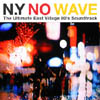 Coinciding with the release of Mutant Disco, Ze unleashes another collection, this time concentrating on their other label specialty. No-wave was a short-lived outgrowth of post-punk concentrating on short, powerful bursts of atonal rock, with agitated vocals, primitive percussion and explosions of free jazz. The no-wave current lives on today through current bands like Erase Errata, Q and Not U and Liars that have obviously been influenced by the original NYC zeitgeist. Ze Records is using a relatively loose definition of the genre for this collection, including slightly off-topic contributions from synth-pop pioneers Suicide and more dance-oriented material from Lizzy Mercier Descloux. It all holds together well, though, making this a worthwhile compilation containing many previously hard-to-find tracks.Ze
Coinciding with the release of Mutant Disco, Ze unleashes another collection, this time concentrating on their other label specialty. No-wave was a short-lived outgrowth of post-punk concentrating on short, powerful bursts of atonal rock, with agitated vocals, primitive percussion and explosions of free jazz. The no-wave current lives on today through current bands like Erase Errata, Q and Not U and Liars that have obviously been influenced by the original NYC zeitgeist. Ze Records is using a relatively loose definition of the genre for this collection, including slightly off-topic contributions from synth-pop pioneers Suicide and more dance-oriented material from Lizzy Mercier Descloux. It all holds together well, though, making this a worthwhile compilation containing many previously hard-to-find tracks.Ze
Although collections like this one and New York Noise are nice, they really just emphasize the need for a reissue of the epoch-defining Brian Eno-produced No New York LP that featured DNA, Teenage Jesus and the Jerks, The Contortions and MARS. One of those supposedly "hip" NYC record labels should get a clue and re-release this in a deluxe, re-mastered CD edition. Come on people, this is long overdue! This shouldn't be held against NY No Wave, however, as it makes a worthy addendum to that earlier classic. James Siegfried (AKA James Chance AKA James White) is all over this anthology, either with his own bands The Contortions and James White and the Blacks, or as part of Lydia Lunch's Teenage Jesus and the Jerks and Arto Lindsay's Pill Factory. The ubiquitous "Contort Yourself" appears yet again, this time in its three-minute, spastic free-jazz incarnation. Suicide appears twice, including their electro-punk satire of Velvet Underground "Mister Ray", an unholy clash of Lou Reed, Elvis and Kraftwerk. Lydia Lunch's noir jazz narrative "Lady Scarface" sounds out of place on a no-wave compilation, but she's still as funny and sexy as ever. MARS' contributions are fantastic, short-winded explosions of tense, surrealistic punk. Rosa Yemen's minimalist sound was informed by French playwright Antonin Artaud's "Theater of Cruelty", with Anna Magnani's zealously screamed accusations backed by atonal rhythms and dark surf guitar. Arto/Neto is an odd art school in-joke, a combination of Seth Tillett's off-kilter playing and Arto Lindsay's warped, rambling joke narratives. The 22 tracks that make up NY No Wave only actually constitute eight different bands, but there is enough variety in each artist's strategies to keep things interesting for the entire length. Taking a look through Ze Records' extensive discography, there is more than enough mutant disco and no-wave material to fill 10 more compilations like this one. Here's hoping that they continue the great work of re-issuing their sought-after back catalog. 
- Suicide - Mister Ray
- Rosa Yemen - Rose Vertov
- MARS - 11,000 Volts
Read More
- Administrator
- Albums and Singles
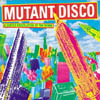 In 1981, anunderground New York label known for their influential roster of discoand no-wave artists released a seminal compilation of some of theirbest singles.With this release, Ze Records both solidified the definition of theleftfield disco movement and gave the genre a name that stuck. It's aname that conjures up images of tentacled, post-nuclear fallouthumanoids letting loose and getting down on the crowded dance floor ofStudio 54. The intention was to showcase the edgier, more avant-gardeside of New York disco. The original LP contained only six songs, butfor the new CD re-issue, Ze Records has expanded it into a stunningtwo-CD set containing a total of 25 tracks, the bulk of their relevant12" dance output from 1979 to 1981. This music was years ahead of itstime, and will sound particularly relevant to those tuning into thesecond wave of avant-dance, characterized by current acts like Out Hud,Metro Area, Playgroup, and LCD Soundsystem. Many recent anthologies,such as Strut's Disco Not Disco series and Soul Jazz's New York Noise have attempted to document the scene, but Ze Records has the historical advantage of including the entire original Mutant Disco LP. Also, the overall focus on Mutant Discois much clearer, and the compilation boasts many rare tracks notavailable elsewhere other than the highly collectible original LPs,which frequently change hands for prices as high as $500. Was (Not Was)appear three times across the two discs. Their first track "Wheel MeOut" is a densely layered groove, combining sampling techniques, sleazyrock and bad jazz into an infectious disco-house number. Bill Laswell'sartist-collective Material produced a clutch of important singles andLPs in the early 80's, but for sheer fun it would be hard to beat therock-disco collision of "Bustin' Out," with vocals from soul diva NonaHendryx. Cristina's contribution is the first of several lightweightdisco remakes of classic rock songs on the collection, this one a coverof The Beatles' "Drive My Car" (produced by John Cale of VelvetUndergound, no less). I have never really liked the Latin dancepastiche of Kid Creole and the Coconuts, but their two contributions toMutant Disco are surprisingly addictive, especially thedislocated mambo of "Annie I'm Not Your Daddy." I'd rather shake my assto this than Los Del Rio any day of the week. The Aural Exciters areone of the more mysterious acts on this collection, appearing with apair of truly odd, dub-influenced disco deconstructions. It is nearlyimpossible to find any information on this band, but it's hard to denythe weird power of "Emile (Night Rate)," with its off-kilter percussionand spooky, echo-chambered chorus of women's screams. James White andthe Blacks (AKA James Chance and the Contortions), turn in theumpteenth re-recorded version of the gloriously warped no-wave classic"Contort Yourself," re-worked and extended for the dance floor. LizzyMercier Descloux was quite the scenester in post-punk New York - asavvy French waif who transformed herself from a first-generation punkinto a sassy disco diva. Her three songs are strangely prescient of alater NYC breakthrough dance-pop sexpot named Madonna. Descloux's coverof Arthur Brown's 60's psychedelic novelty-hit "Fire" would be puredisco cheese, were it not for the top-notch arrangements andproduction. Although I can't provide a description of every song on theanthology, there are also fine contributions from obscurities such asGarcons, Gichy Dan, Coati Mundi and Casino Music. Play any of thesetracks head-to-head with the accepted canon of classic disco artists -Larry Levan, Giorgio Moroder, Cerrone - and it holds up magnificently. Mutant Disco is nothing less than an essential document of dance music's adventurous past.
In 1981, anunderground New York label known for their influential roster of discoand no-wave artists released a seminal compilation of some of theirbest singles.With this release, Ze Records both solidified the definition of theleftfield disco movement and gave the genre a name that stuck. It's aname that conjures up images of tentacled, post-nuclear fallouthumanoids letting loose and getting down on the crowded dance floor ofStudio 54. The intention was to showcase the edgier, more avant-gardeside of New York disco. The original LP contained only six songs, butfor the new CD re-issue, Ze Records has expanded it into a stunningtwo-CD set containing a total of 25 tracks, the bulk of their relevant12" dance output from 1979 to 1981. This music was years ahead of itstime, and will sound particularly relevant to those tuning into thesecond wave of avant-dance, characterized by current acts like Out Hud,Metro Area, Playgroup, and LCD Soundsystem. Many recent anthologies,such as Strut's Disco Not Disco series and Soul Jazz's New York Noise have attempted to document the scene, but Ze Records has the historical advantage of including the entire original Mutant Disco LP. Also, the overall focus on Mutant Discois much clearer, and the compilation boasts many rare tracks notavailable elsewhere other than the highly collectible original LPs,which frequently change hands for prices as high as $500. Was (Not Was)appear three times across the two discs. Their first track "Wheel MeOut" is a densely layered groove, combining sampling techniques, sleazyrock and bad jazz into an infectious disco-house number. Bill Laswell'sartist-collective Material produced a clutch of important singles andLPs in the early 80's, but for sheer fun it would be hard to beat therock-disco collision of "Bustin' Out," with vocals from soul diva NonaHendryx. Cristina's contribution is the first of several lightweightdisco remakes of classic rock songs on the collection, this one a coverof The Beatles' "Drive My Car" (produced by John Cale of VelvetUndergound, no less). I have never really liked the Latin dancepastiche of Kid Creole and the Coconuts, but their two contributions toMutant Disco are surprisingly addictive, especially thedislocated mambo of "Annie I'm Not Your Daddy." I'd rather shake my assto this than Los Del Rio any day of the week. The Aural Exciters areone of the more mysterious acts on this collection, appearing with apair of truly odd, dub-influenced disco deconstructions. It is nearlyimpossible to find any information on this band, but it's hard to denythe weird power of "Emile (Night Rate)," with its off-kilter percussionand spooky, echo-chambered chorus of women's screams. James White andthe Blacks (AKA James Chance and the Contortions), turn in theumpteenth re-recorded version of the gloriously warped no-wave classic"Contort Yourself," re-worked and extended for the dance floor. LizzyMercier Descloux was quite the scenester in post-punk New York - asavvy French waif who transformed herself from a first-generation punkinto a sassy disco diva. Her three songs are strangely prescient of alater NYC breakthrough dance-pop sexpot named Madonna. Descloux's coverof Arthur Brown's 60's psychedelic novelty-hit "Fire" would be puredisco cheese, were it not for the top-notch arrangements andproduction. Although I can't provide a description of every song on theanthology, there are also fine contributions from obscurities such asGarcons, Gichy Dan, Coati Mundi and Casino Music. Play any of thesetracks head-to-head with the accepted canon of classic disco artists -Larry Levan, Giorgio Moroder, Cerrone - and it holds up magnificently. Mutant Disco is nothing less than an essential document of dance music's adventurous past.- Was (Not Was) - Wheel Me Out
- Aural Exciters - Emile (Night Rate)
- Lizzy Mercier Descloux - Fire
Read More
- Administrator
- Albums and Singles
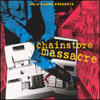 With fifteen different songs from fifteen different musicians, thiscollection simultaneously demonstrates the creative variety found onthe On-U roster. Included are a few exclusive tracks, songs fromupcoming releases, and a smattering of recordings already available onvarious albums. Though a lot of what On-U releases has a reggae or dubfeel to it, Chainstore Massacrehouses some blues-inspired meanderings from Little Axe, a rathererratic sample fest from Adrian Sherwood, a dance-floor rendition ofAsian Dub Foundation's "Cyberabad," and a metal influenced electronicwork-out from Mark Stewart. There's plenty of depth to be found andthat's part of what makes this compilation so great: none of the songssound the same. Ri Ra drops a concrete slab of Irish rap backed by someslick keyboard melodies and a smooth layer of bass and on the nexttrack Junior Delgado unleashes a basic reggae track dedicated toexplaining the benefits of using marijuana. So while there is a goodamount of both upbeat and chilled out tunes, the most awesomelysurprising and beautiful music comes from a musician named Skip "LittleAxe" McDonald. He is the only one on the album that gets two tracks tohimself and he deserves it. "One Drop Blues" is full of layeredguitars, harmonica, a slow and sassy rhythm, and a guitar that paints apicture of a hot day in the park. "My Love I Bring" has Sinead O'Connoron lead vocals and a misty atmosphere provided by an eloquent meshingof electric and acoustic guitar. These two songs warrant buying thecompilation alone, but the compilation as a whole is cohesive anddiverse and is a great appetizer for material that will hopefully bereleased soon.
With fifteen different songs from fifteen different musicians, thiscollection simultaneously demonstrates the creative variety found onthe On-U roster. Included are a few exclusive tracks, songs fromupcoming releases, and a smattering of recordings already available onvarious albums. Though a lot of what On-U releases has a reggae or dubfeel to it, Chainstore Massacrehouses some blues-inspired meanderings from Little Axe, a rathererratic sample fest from Adrian Sherwood, a dance-floor rendition ofAsian Dub Foundation's "Cyberabad," and a metal influenced electronicwork-out from Mark Stewart. There's plenty of depth to be found andthat's part of what makes this compilation so great: none of the songssound the same. Ri Ra drops a concrete slab of Irish rap backed by someslick keyboard melodies and a smooth layer of bass and on the nexttrack Junior Delgado unleashes a basic reggae track dedicated toexplaining the benefits of using marijuana. So while there is a goodamount of both upbeat and chilled out tunes, the most awesomelysurprising and beautiful music comes from a musician named Skip "LittleAxe" McDonald. He is the only one on the album that gets two tracks tohimself and he deserves it. "One Drop Blues" is full of layeredguitars, harmonica, a slow and sassy rhythm, and a guitar that paints apicture of a hot day in the park. "My Love I Bring" has Sinead O'Connoron lead vocals and a misty atmosphere provided by an eloquent meshingof electric and acoustic guitar. These two songs warrant buying thecompilation alone, but the compilation as a whole is cohesive anddiverse and is a great appetizer for material that will hopefully bereleased soon.- 2 Bad Card - Noise Polluters
- Little Axe - One Drop Blues
- Shadon - Places I Won't Go
Read More
- Administrator
- Albums and Singles
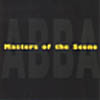 The effects of Abba's music is undeniably cross-cultural and timeless. From the freaky tourists with smelly breath at the NY record shops to the merch-spotting Chris Carter publicity photos, it's hard to find somebody who's life has not been touched. Over the course of a few years, a staggering 24 tracks have been gathered by this tiny operation out of Chicago which bridge the gap between one of the first bands I was fond of in my young childhood to the noisy, more abrasive sounds I'm enjoying in my adulthood. I find this collection both refreshing but question its sub-title.
The effects of Abba's music is undeniably cross-cultural and timeless. From the freaky tourists with smelly breath at the NY record shops to the merch-spotting Chris Carter publicity photos, it's hard to find somebody who's life has not been touched. Over the course of a few years, a staggering 24 tracks have been gathered by this tiny operation out of Chicago which bridge the gap between one of the first bands I was fond of in my young childhood to the noisy, more abrasive sounds I'm enjoying in my adulthood. I find this collection both refreshing but question its sub-title.
Through the noise, there are some strong examples of artists who either take the task seriously or take their music seriously: people who thought "how could I reinterpret this song to put my own take on it," and get to the core of the brains of one of pop music's most successful songwriting teams, Anderson and Ulvaus. Unfortunately, there are a few too many tracks which simply play the original song in the background and do easy, lazy, pointless nonsense on top. It opens with a mistake I think, as Conned Ham's "Does Your Mother Know?" more strongly resembles the Beatles "Your Mother Should Know," followed by a rather bedroom-recording sound of Sockeye's "Take a Chance On Me," who at least demonstrate they know the music and probably like it too. Then, faster than you can say wife-swapping-Volvo-drivers, Kazumoto Endo blows the roof off with that maddening riff of "Gimme, Gimme, Gimme," bending it to uncomfortable, almost borderline unbearable levels. Absorb's "Super Trooper" is a very endearing vocal interpretation that resounds with the feeling of innocence truly in love with the material while Guilty Connector's noisy "Rock Me" is pure sun up at 3am sex (just remove the original from the background at the end please). The contribution from I and Kawabata "sure I'll appear on your compilation" Makoto is somewhat of a let down as the vocal rendition of "Eagle" (possibly one of Abba's most brilliant moments) could have potentially been incredible, but only ends up with a sparse musical arrangement (only synth samples and delays) to back up a rather timid voice. (I can only begin to imagine a boombastic distortion-filled Acid Mothers cover of "Eagle," and it's gooooood.) Another unexpected moment is the Irr.App.(Ext.) contribution, "Knowing Me, Knowing You," where the ever creepy Matt Waldron steps out from his psychotic vaginal ochra shield to bare all with vocals and acoustic guitar in a warped dementia style only he can do (the guy is a fucking genius). While most of the rest are amusing enough, (and a few include too many skipping/samplings of Abba) it's worth noting that with every purchase, a coupon is included for a cassette of "outtakes," this compilation noticably fails in the tech department - mastering gear might not be necessary for noise, but at least the levels could have been balanced from track to track. Or, perhaps this is the effect this is trying to give - that of a mix tape of some of your best friends in their basements doing their most personal impersonations of something everybody truly loves but is afraid to admit in public.
- Irr.App.(Ext.) - Knowing Me, Knowing You
- Foamula - Chiquitita
- Kazumoto Endo - Gimme, Gimme, Gimme
Read More
- Administrator
- Albums and Singles
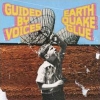 Bob Pollard may be a god to some, but lately there's been a strangedecline in the music he releases outside of Guided By Voices. Airport5's last was an errant mess, the Circus Devils' Harold Pig Memorialhad its moments but ultimately didn't satiate, and even the last GbVrecord was showing some cracks in the surface. Some were saying themost prolific man in rock was running out of steam finally, and thatthis marked the beginning of the end for Pollard and Co. This newrecord should easily choke all the naysayers. Earthquake Glue is the first great Guided By Voices album since Under the Bushes, Under the Starsand marks the real return of the band after their two album romp withTVT. Tighter, leaner, and more ready for action than anything on Universal Truths and Cycles,"My Kind of Soldier" kicks it off with bright guitars and classicPollard vocals. The production both sounds like it has taken a slighthit from the last record, which is just what most fans probably want,while it is improved in other areas; but this sound quality really doesserve these songs. "She Goes Off at Night" and "Useless Inventions"propel the album forward, and the keyboard and harmonica of "DirtyWater" show a new willingness to try something fresh. "I'll Replace YouWith Machines," though, is the real treat, the nugget that proves theboys are back. With its whip-cracking percussion and Doppler Effectmix, the urgency comes across in full force with the "I can't face you"chorus throwing in extra oomph. It's the Ghost of Christmas Past, andit's a pure joy to behold. Elsewhere, "The Best of Jill Hives" is barnone the best song GbV have ever written. The bass line grooves andundulates when Pollard joins, then the other band members come in oneby one. "I don't know how you find your nerve/I don't know how youchoose your words" sounds like the questions of a child to his/herfather after a harsh defeat. Pollard's voice warbles in its mild echo,and no one cares. It's classic GbV, it's got a great hook, and it endsbefore it becomes too commonplace. I admit it: I, too, had my doubtsabout the longevity of the band hearing the last album and EP. "They'vehad a great career, so maybe it would be a good time for them to hangit up, before it starts to get really bad." No more. There's miles leftin this sound yet.
Bob Pollard may be a god to some, but lately there's been a strangedecline in the music he releases outside of Guided By Voices. Airport5's last was an errant mess, the Circus Devils' Harold Pig Memorialhad its moments but ultimately didn't satiate, and even the last GbVrecord was showing some cracks in the surface. Some were saying themost prolific man in rock was running out of steam finally, and thatthis marked the beginning of the end for Pollard and Co. This newrecord should easily choke all the naysayers. Earthquake Glue is the first great Guided By Voices album since Under the Bushes, Under the Starsand marks the real return of the band after their two album romp withTVT. Tighter, leaner, and more ready for action than anything on Universal Truths and Cycles,"My Kind of Soldier" kicks it off with bright guitars and classicPollard vocals. The production both sounds like it has taken a slighthit from the last record, which is just what most fans probably want,while it is improved in other areas; but this sound quality really doesserve these songs. "She Goes Off at Night" and "Useless Inventions"propel the album forward, and the keyboard and harmonica of "DirtyWater" show a new willingness to try something fresh. "I'll Replace YouWith Machines," though, is the real treat, the nugget that proves theboys are back. With its whip-cracking percussion and Doppler Effectmix, the urgency comes across in full force with the "I can't face you"chorus throwing in extra oomph. It's the Ghost of Christmas Past, andit's a pure joy to behold. Elsewhere, "The Best of Jill Hives" is barnone the best song GbV have ever written. The bass line grooves andundulates when Pollard joins, then the other band members come in oneby one. "I don't know how you find your nerve/I don't know how youchoose your words" sounds like the questions of a child to his/herfather after a harsh defeat. Pollard's voice warbles in its mild echo,and no one cares. It's classic GbV, it's got a great hook, and it endsbefore it becomes too commonplace. I admit it: I, too, had my doubtsabout the longevity of the band hearing the last album and EP. "They'vehad a great career, so maybe it would be a good time for them to hangit up, before it starts to get really bad." No more. There's miles leftin this sound yet.Read More
- Administrator
- Albums and Singles
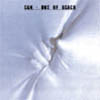 Germany's Can is certainly the most influential band to emerge from thefirst wave of krautrock. Their first six studio albums are unparalleledmasterpieces of experimental rock, effortlessly combining jazz andclassical influences with psychedelic guitar rock, ethnic percussionand unhinged vocal improvisations. The past few years have seen theentire back catalog re-mastered and re-released in deluxe CD and LPeditions on Can's own Spoon imprint. Every album, that is, except forthe much-maligned 1978 release Out of Reach,which Can seem eager to completely omit from their discography. Assuch, it has long remained one of their rarest and least talked aboutalbums. Fortunately for completists, Marginal Talent has now issued are-mastered CD of this most obscure of Can records. The received wisdomis that Can began to decline when Japanese vocalist Damo Suzukideparted to join a religious sect after 1976's Future Days.While this is somewhat accurate, hindsight has been kinder to thelater, more homogenized Can albums. We can now retrospectively admitthat Soon Over Babaluma and Flow Motion both containgreat moments, displaying the same ingenious instrumental fusion thatcharacterized Can's most fertile creative period. Record collector loredemands that Out of Reach be a similarly underrated, unsung gem. Unfortunately, this is just not the case. Out of Reach is one of Can's worst albums, and while it has its moments, it must be relegated to the same pile as Saw Delight and Inner Space- disappointing latter-day efforts that make convincing arguments thatCan should have retired earlier. The main reason for this drop inquality was most likely the departure of bassist Holger Czukay,founding member and innovator. To make up for Czukay's noticeableabsence, Rosko Gee and Reebob Kwaku-Baah of the execrable prog-rockband Traffic joined the line-up. Their influence is an unwelcome one,to put it mildly. Gee and Kwaku-Baah bring with them a penchant forpointless jazz-inflected solos that drone on endlessly, watering downthe usually explosive chemistry between Irmin Schmidt, Jaki Liebezeitand Michael Karoli. "Serpentine" introduces this incarnation of Can,with a mildly engaging marriage of ethnic instrumentals and elevatorjazz. The music is far from terrible, but compared to dynamicmasterpieces like Ege Bamyasi and Tago Mago, it'spositively snore-inducing. "Pauper's Daughter and I" is livelier, butis marred by the badly delivered nursery rhyme lyrics from Rosko Gee."November" is by far the best track on the album, the one song wherethe fuzz guitar really lets loose, and the rest of the band'simprovisations build a trippy, pitch-perfect backdrop for Karoli'samazing soloing. "Seven Days Awake" starts out on an interesting note,but soon declines into pointless repetition. "Give Me No 'Roses'"sounds like a bad Traffic outtake, as does the sub-par reggae of "LikeInobe God". The one-and-a-half minutes of "One More Day" is the album'stribal swansong. This is far from essential Can, even more troublingthan 1989's ill-advised reunion album Rite Time. If you are looking to collect every Can album, put Out of Reach right at the bottom of the list.
Germany's Can is certainly the most influential band to emerge from thefirst wave of krautrock. Their first six studio albums are unparalleledmasterpieces of experimental rock, effortlessly combining jazz andclassical influences with psychedelic guitar rock, ethnic percussionand unhinged vocal improvisations. The past few years have seen theentire back catalog re-mastered and re-released in deluxe CD and LPeditions on Can's own Spoon imprint. Every album, that is, except forthe much-maligned 1978 release Out of Reach,which Can seem eager to completely omit from their discography. Assuch, it has long remained one of their rarest and least talked aboutalbums. Fortunately for completists, Marginal Talent has now issued are-mastered CD of this most obscure of Can records. The received wisdomis that Can began to decline when Japanese vocalist Damo Suzukideparted to join a religious sect after 1976's Future Days.While this is somewhat accurate, hindsight has been kinder to thelater, more homogenized Can albums. We can now retrospectively admitthat Soon Over Babaluma and Flow Motion both containgreat moments, displaying the same ingenious instrumental fusion thatcharacterized Can's most fertile creative period. Record collector loredemands that Out of Reach be a similarly underrated, unsung gem. Unfortunately, this is just not the case. Out of Reach is one of Can's worst albums, and while it has its moments, it must be relegated to the same pile as Saw Delight and Inner Space- disappointing latter-day efforts that make convincing arguments thatCan should have retired earlier. The main reason for this drop inquality was most likely the departure of bassist Holger Czukay,founding member and innovator. To make up for Czukay's noticeableabsence, Rosko Gee and Reebob Kwaku-Baah of the execrable prog-rockband Traffic joined the line-up. Their influence is an unwelcome one,to put it mildly. Gee and Kwaku-Baah bring with them a penchant forpointless jazz-inflected solos that drone on endlessly, watering downthe usually explosive chemistry between Irmin Schmidt, Jaki Liebezeitand Michael Karoli. "Serpentine" introduces this incarnation of Can,with a mildly engaging marriage of ethnic instrumentals and elevatorjazz. The music is far from terrible, but compared to dynamicmasterpieces like Ege Bamyasi and Tago Mago, it'spositively snore-inducing. "Pauper's Daughter and I" is livelier, butis marred by the badly delivered nursery rhyme lyrics from Rosko Gee."November" is by far the best track on the album, the one song wherethe fuzz guitar really lets loose, and the rest of the band'simprovisations build a trippy, pitch-perfect backdrop for Karoli'samazing soloing. "Seven Days Awake" starts out on an interesting note,but soon declines into pointless repetition. "Give Me No 'Roses'"sounds like a bad Traffic outtake, as does the sub-par reggae of "LikeInobe God". The one-and-a-half minutes of "One More Day" is the album'stribal swansong. This is far from essential Can, even more troublingthan 1989's ill-advised reunion album Rite Time. If you are looking to collect every Can album, put Out of Reach right at the bottom of the list.Read More

